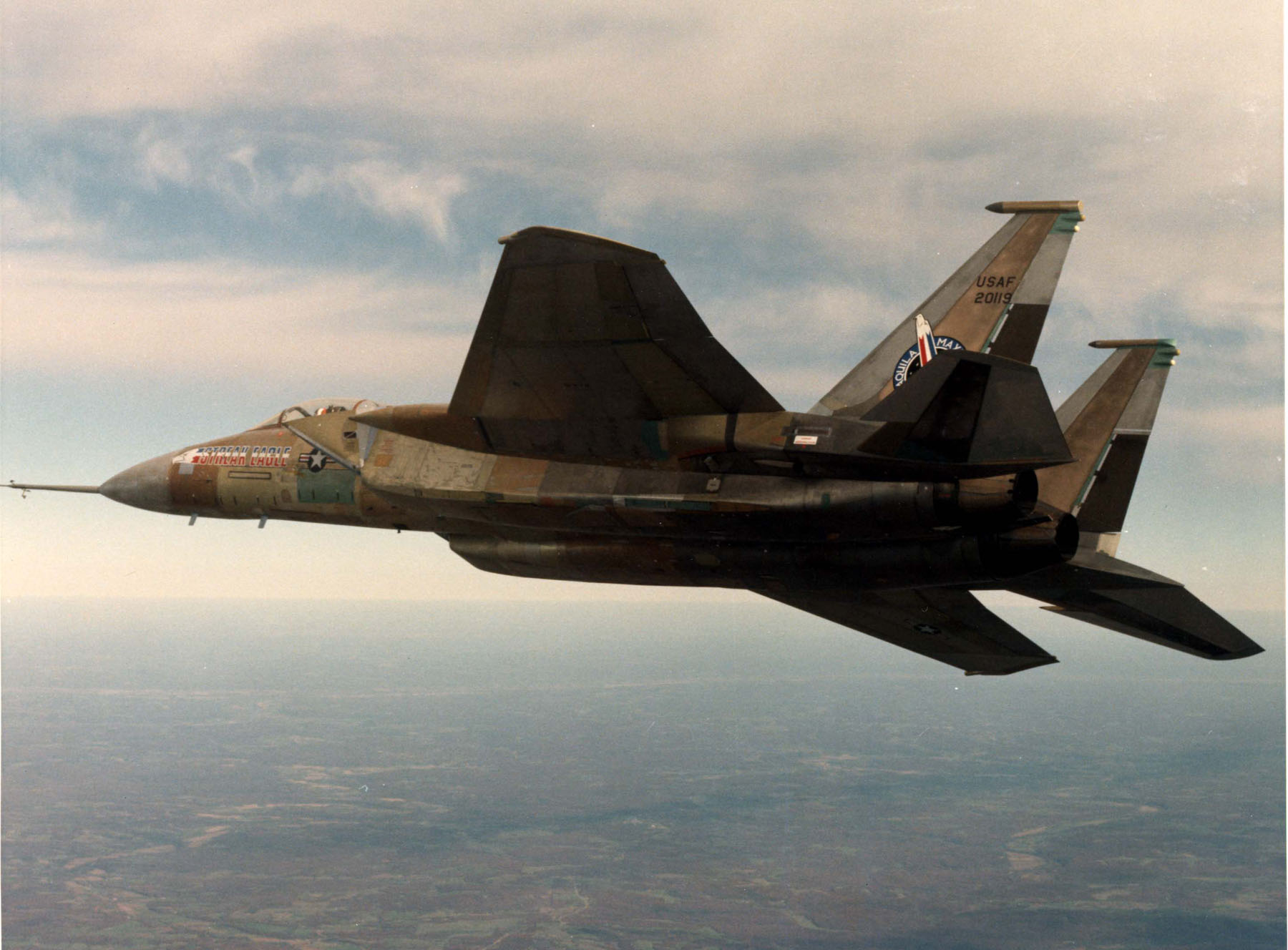
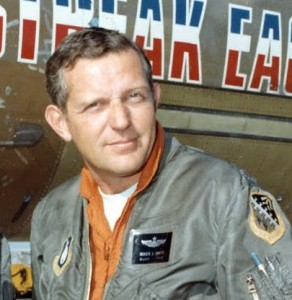
19 January 1975: Major Roger J. Smith, United States Air Force, a test pilot assigned to the F-15 Joint Test Force at Edwards AFB, California, flew the McDonnell Douglas F-15A-6-MC 72-0119, Streak Eagle, to its sixth Fédération Aéronautique Internationale (FAI) and U.S. National Aeronautic Association time-to-altitude record.
From brake release at Grand Forks Air Force Base, North Dakota, at 913 feet (278 meters) above Sea Level, the F-15 reached 20,000 meters (65,617 feet) in 122.94 seconds.
This was the sixth time-to-altitude record set by Streak Eagle in just three days.
FAI Record File Num #9066 [Direct Link]
Status: ratified – retired by changes of the sporting code
Region: World
Class: C (Powered Aeroplanes)
Sub-Class: C-1 (Landplanes)
Category: Not applicable
Group: 3 : turbo-jet
Type of record: Time to climb to a height of 20 000 m
Performance: 2 min 02.94s
Date: 1975-01-19
Course/Location: Grand Forks, ND (USA)
Claimant Roger J. Smith (USA)
Aeroplane: McDonnell Douglas F-15
Engines: 2 Pratt & Whitney F-100
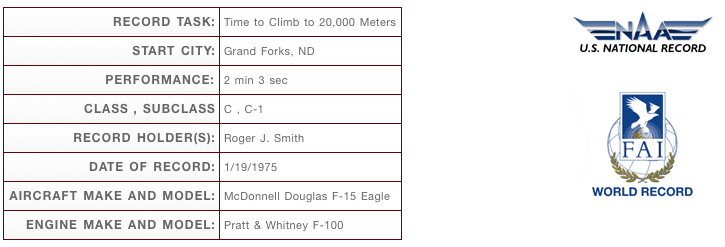 Roger Smith’s United States National Record still stands.
Roger Smith’s United States National Record still stands.
 Streak Eagle is a very early production F-15A-6-MC Eagle, a single-seat, twin-engine air superiority fighter. It is 63 feet, 9.0 inches (19.431 meters) long with a wingspan of 42 feet, 9.7 inches (13.048 meters) and overall height of 18 feet, 5.4 inches (5.624 meters). The F-15A has an empty weight of 25,870 pounds (11,734 kilograms) and its maximum takeoff weight (MTOW) is 44,497 pounds (20,184 kilograms).
Streak Eagle is a very early production F-15A-6-MC Eagle, a single-seat, twin-engine air superiority fighter. It is 63 feet, 9.0 inches (19.431 meters) long with a wingspan of 42 feet, 9.7 inches (13.048 meters) and overall height of 18 feet, 5.4 inches (5.624 meters). The F-15A has an empty weight of 25,870 pounds (11,734 kilograms) and its maximum takeoff weight (MTOW) is 44,497 pounds (20,184 kilograms).
 The F-15A is powered by two Pratt & Whitney JTF22A-25A (F100-PW-100) afterburning turbofan engines. The F100 is a two-spool, axial-flow turbine engine with a 3-stage fan section; 10-stage compressor; single chamber combustion section; and 4-stage turbine (2 low- and 2 high-pressure stages). The engine has a Maximum Continuous Power rating of 12,410 pounds of thrust (55.202 kilonewtons); 14,690 pounds (65.344 kilonewtons, 30-minute limit; and a maximum 23,840 pounds (106.046 kilonewtons), 5-minute limit. The F100-PW-100 is 191 inches (4.851 meters) long, 46.5 inches (1.181 meters) in diameter, and weighs 3,035 pounds (1,376.7 kilograms).
The F-15A is powered by two Pratt & Whitney JTF22A-25A (F100-PW-100) afterburning turbofan engines. The F100 is a two-spool, axial-flow turbine engine with a 3-stage fan section; 10-stage compressor; single chamber combustion section; and 4-stage turbine (2 low- and 2 high-pressure stages). The engine has a Maximum Continuous Power rating of 12,410 pounds of thrust (55.202 kilonewtons); 14,690 pounds (65.344 kilonewtons, 30-minute limit; and a maximum 23,840 pounds (106.046 kilonewtons), 5-minute limit. The F100-PW-100 is 191 inches (4.851 meters) long, 46.5 inches (1.181 meters) in diameter, and weighs 3,035 pounds (1,376.7 kilograms).
The cruise speed of the F-15A Eagle is 502 knots (578 miles per hour/930 kilometers per hour). It has a maximum speed of 893 knots (1,028 miles per hour/1,654 kilometers per hour) at 10,000 feet (3,048 meters), and 1,434 knots (1,650 miles per hour/2,656 kilometers per hour) at 45,000 feet (13,716 meters). The ceiling is 63,050 feet (19,218 meters) at maximum power. It can climb at an initial 67,250 feet per minute (342 meters per second) from Sea Level, and with a thrust-to-weight ratio of 1.15:1, The F-15 can climb straight up. The Eagle’s combat radius is 638 nautical miles (734 statute miles/1,182kilometers).
The F-15A is armed with one General Electric M61A1 Vulcan 20mm rotary cannon with 938 rounds of ammunition, four AIM-7 Sparrow radar-guided missiles and four AIM-9 Sidewinder heat-seeking missiles.
384 F-15A Eagles were built before production shifted to the improved F-15C version. As F-15Cs became operational, the F-15As were transferred to Air National Guard units assigned to defend continental U.S. airspace. The last F-15A was retired from service in 2009.
 Streak Eagle was specially modified for the record attempts. Various equipment that would not be needed for these flights was eliminated: The flap and speed brake actuators, the M61 cannon and its ammunition handling equipment, the radar and fire control systems, unneeded cockpit displays and radios, and one generator.
Streak Eagle was specially modified for the record attempts. Various equipment that would not be needed for these flights was eliminated: The flap and speed brake actuators, the M61 cannon and its ammunition handling equipment, the radar and fire control systems, unneeded cockpit displays and radios, and one generator.
Other equipment was added: An extended pitot boom was mounted at the nose with alpha and beta vanes; equipment for the pilot’s David Clark Company A/P-225-6 full pressure suit; extremely sensitive accelerometers and other instrumentation; extra batteries; an in-cockpit video camera aimed over the pilot’s shoulder; and perhaps most important, a special hold-back device was installed in place of the fighter’s standard arresting hook.
These changes resulted in an airplane that was approximately 1,800 pounds (817 kilograms) lighter than the standard production F-15A. This gave it a thrust-to-weight ratio of 1.4:1.
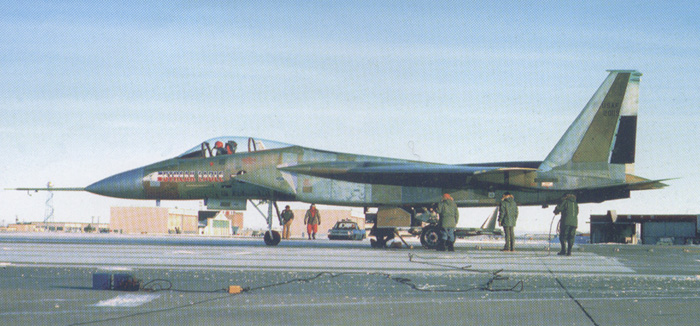
The flight profiles for the record attempts were developed by McDonnell Douglas Chief Developmental Test Pilot, Charles P. “Pete” Garrison (Lieutenant Colonel, U.S. Air Force, Retired).
Streak Eagle carried only enough fuel for each specific flight, and for the 20,000 meter climb, weighed 29,877 pounds (13,552 kilograms). It was secured to the hold-back device on the runway and the engines were run up to full afterburner. It was released from the hold-back and was airborne in just three seconds.
When the F-15 reached 428 knots (793.4 kilometers per hour), the pilot pulled up into an Immelman, holding 2.5 Gs. Streak Eagle arrived back over the air base, in level flight at about 32,000 feet (9,754 meters), but upside down. Rolling up right, Streak Eagle continued accelerating to Mach 1.5 when the pilot pulled the fighter up at 4.0 Gs until it reached a 55° climb angle until it reached 20,000 meters
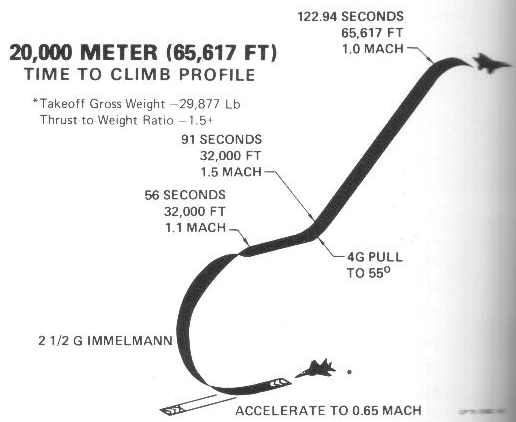 Because Streak Eagle was a very early production airplane, its internal structure was weaker than the final production F-15A standard. It was considered too expensive to modify it to the new standard. It was transferred to the National Museum of the United States Air Force at Wright-Patterson Air Force Base, Ohio, in December 1980.
Because Streak Eagle was a very early production airplane, its internal structure was weaker than the final production F-15A standard. It was considered too expensive to modify it to the new standard. It was transferred to the National Museum of the United States Air Force at Wright-Patterson Air Force Base, Ohio, in December 1980.
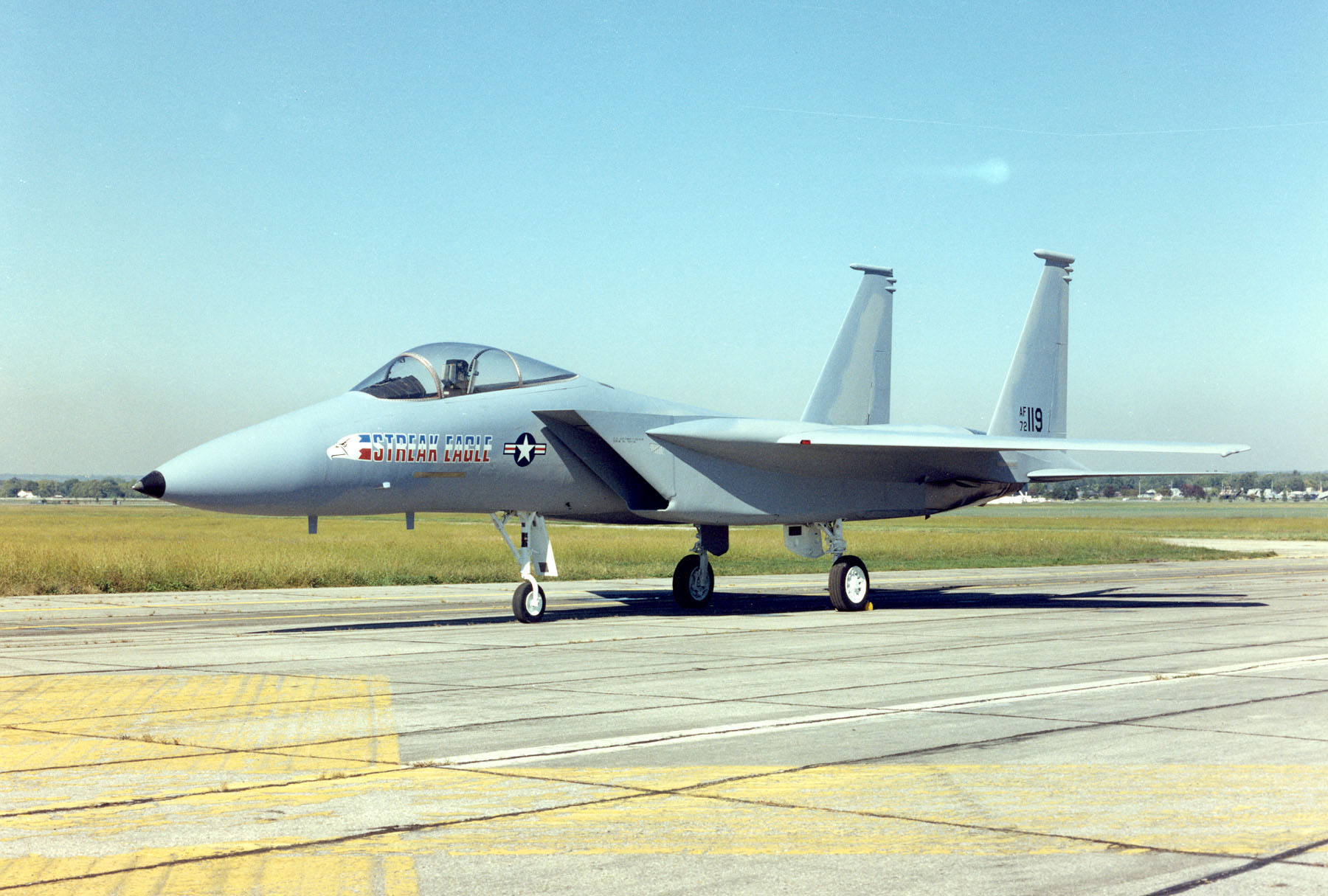
© 2019, Bryan R. Swopes
It was the same day that I completed my first deployment overseas as a young sailor aboard Independence CV-62.
The aircraft was unpainted during the record setting flights to save weight. It was subsequently painted Compass Ghost to prevent oxidation of the bare metal surfaces during display. The USAF Museum just repainted the artifact so it matches its original appearance.
https://theaviationgeekclub.com/usaf-museum-to-paint-the-f-15-streak-eagle-to-match-the-record-setting-time-period/